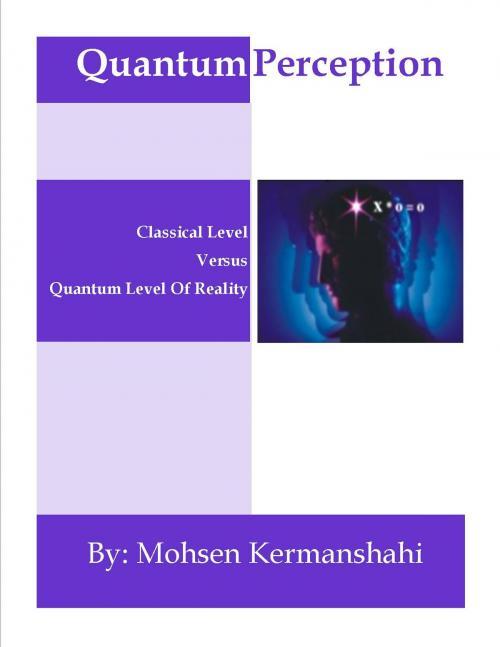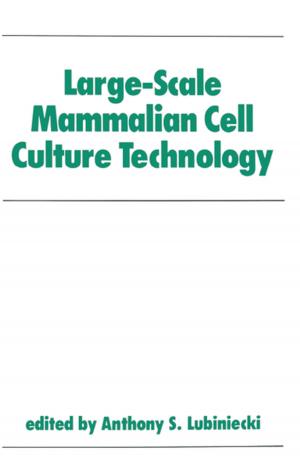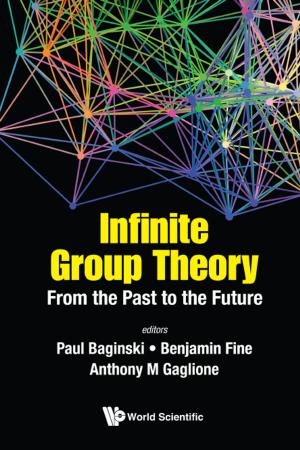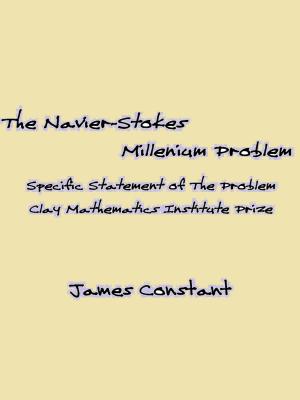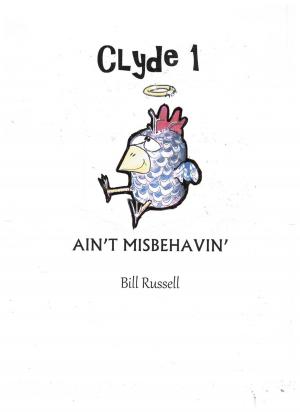Quantum Perception
Classical Level versus Quantum Level of Reality
Nonfiction, Religion & Spirituality, Philosophy, Mind & Body, Science & Nature| Author: | Mohsen Kermanshahi | ISBN: | 1230000128418 |
| Publisher: | Mohsen Kermanshahi | Publication: | April 28, 2013 |
| Imprint: | Language: | English |
| Author: | Mohsen Kermanshahi |
| ISBN: | 1230000128418 |
| Publisher: | Mohsen Kermanshahi |
| Publication: | April 28, 2013 |
| Imprint: | |
| Language: | English |
Abstract: Reality at the classical level is definite, concrete, and logical. Quantum physics, however, pictures a quite different reality, a multi-factual reality full of uncertainties and classically illogical and unacceptable features.
How we reach to a classical reality out of the inherently quantum mechanical universe is the major puzzle. Hugh Everett postulated that wave function is present and never collapses. He believed that every estate of the wave branches out and spawns a new universe (Greene 2005) Therefore, any prediction made by quantum mechanics actually happens in innumerable parallel universes. This “many worlds” interpretation of Everett surpasses one’s wildest imagination. For one, it advocates that there are 10100 copies of me and you. Even worse, the number is ever growing.
In the quest to solve this riddle of the century, every possible road has to be explored. Above, I tried to show that our perception cannot be regarded as flawless and it is possible that classical version of reality is merely an invention of our brain. In this view while the world is in superposition of states, our neuronal network portrays a classical world in our perception. This neuronal network is shaped by human genes and later on is modified by parental, social programming and individual experiences.
The left-brain/right-brain dichotomy or, more accurately, processed versus unprocessed data, and the mechanism by which we form perception may provide a solution. The dichotomy suggests that classical-level perception is partly constructed by our judgmental left hemisphere. However, the perception of the suppressed but unbiased right hemisphere is more in line with quantum-mechanical principles. Our classical perception may be just an approximation of the actual realty out there. Looking outside the box to get a broader view is necessary for the next step in the evolution of the human race. Perhaps we need to pay more attention to the scope of right brain.
Here, I have tried to speculate on a hypothesis and offer some cues. To review a more detailed and substantiated version of the concept, the reader can look at,
www.quntumperception.net
Keywords:
Brain Lateralization Theory, Quantum Superposition of states, Quantum state reduction, Quantum Perception, Observer problem, Brain Hemispheres, vibration theory by Luca Turin, Bose-Einstein condensate
Classical Versus Quantum Mechanical Perception
Introduction
Recent quantum mechanical experiment with large molecules (Fluoro-fullerene C60F48 and meso-tetraphenylporphyrin C44H30N4, 614 gmol-1) blurs the possibility of finding a cutoff between quantum and classic mechanics domains. The above experiments may indicate that universe is inherently quantum mechanical even at larger scales15. The quantum mechanical universe is fundamentally different from our classical perception of the world. To reconcile the two, we must either question quantum mechanics or review the act of perception itself. Century-old experiments have proven the validity of quantum theory. In fact, quantum mechanics is by far the most precise and reliable science that humans have ever grasped. Therefore, in order to resolve the incompatibility, it is reasonable to turn to an assessment of the perception itself.
The Senses
We perceive the world with our senses. The five common senses are vision, hearing, touch, smell, and taste. Our sense organs are mostly stimulated by waves. Our eyes are sensitive to a certain band of electromagnetic waves called visible light. Our ears sense another wave band, called sound frequency. Our skin also receives stimuli as waves. The vibration theory, suggested by Luca Turin, posits that odor receptors also detect the frequency of vibrations of odor molecules.1 Similar theories suggest that different nutrients and chemicals are reached to taste buds in the form of waves as well. If our sensory receptors mostly receive waves from the outside world, how do we perceive these waves as objects? How do we sketch our so-called objective reality out of these waves?
Wave-Particle Duality
To further the discussion, let us explore the nature of matter. Objects are known to have a dualistic wave-particle nature. However, according to our classical perception, matter has a specific mass and volume. Matter is also perceived as local and tangible. Waves, on the other hand, are spread out. They do not have a specific mass or a specific shape. They imply a sense of fluidity. Yet, in the majority of everyday experiences, we perceive a ball as a solid, localized, and tangible object that is subject to external forces. Why do we not sense a ball as a wave?
Below, I explore whether the modern understanding of brain anatomy and physiology can shed light on this puzzle.
As a baby experiments with the outside world, it gradually builds a perception from its environment. This early conceptualization is the ground for building a preliminary logic, which the baby then uses to analyze its surroundings. These perceptions help build the framework for cognition and logic in the future.
Language and mathematics (and numbers in general), two very important tools to build our perception of reality, are learned gradually during the first two years and refined in the years after. The concepts are gradually built as a result of the data processing. However, our interpretation of this data may not exactly represent the actual reality. Our perceptual system’s ability to conceptualize data and perfectly replicate the objective reality is a matter of debate.
Brain Hemispheres, Brain Lateralization5
The forebrain is made of two cerebral hemispheres, left and right. The hemispheres are almost identical in shape, yet they function differently. Most of inputs from our right sensory organs are usually transferred to the left hemisphere, and vice versa. It seems that for the majority of people who are right handed, the left hemisphere is specialized to perform common tasks. For a long time, it was believed that the left hemisphere was doing the actual work, while the right hemisphere remain mostly dormant.
The right hemisphere has been called the “subordinate” or “minor” hemisphere, and some have even referred to it as “illiterate” and “mentally retarded.” However recently it is understood that each of the hemispheres has its own functions. Despite their somewhat exclusive cognitive roles, the functions of the two hemispheres are mutual and complement each other.
On the other hand, the classical and quantum levels of reality are seemingly alien to each other. Yet, the two domains portray two different perceptions of the same realm.
We usually distinguish the hemispheres by the traits they are linked to—the head versus the heart, thoughts versus feelings, mind versus instinct, sensing versus intuition, and so on. Please note that I apply idealization and simplistic views while describing hemispheric functions. In reality brain tasks are complex undertakings and are carried out by a collaboration of the two hemispheres. However, in the following lines, I take direct reflection of received data as the perception of the right brain whereas decoding and manipulation of information to create appropriate perception as product of the left brain. This simplistic view should not invalidate the main argument in this article.
Left Hemisphere: Objective, Discrete, Logical, Classical
For the majority of individuals, the left hemisphere is trained to be analytical, to look for components and strive for details. The data received from the different sense organs are gathered and assembled to arrive at a general idea and then analyzed to draw a comprehensible, detailed picture consisting of the different components. For example, the information received from a flower is divided and analyzed by the left hemisphere as petal, stem, stamen, and pollen.
Time is a tool of the left hemisphere. The left side of the brain gathers the information and arranges it in timely succession. That is how we sense the past, present, and future. In addition, time has a trajectory that extends from the past to the future, and not the other way around. As such, it mimics time as understood in classical physics. In contrast, time in quantum mechanics can be symmetric and flows in both directions.
The left brain is responsible for finding meaning in the data it receives. The left brain extracts the details and draws a comprehensible picture out of a wide array of incoming information. Therefore, it has to be judgmental to be able to draw a definite scheme. The analytic left hemisphere critically investigates the information and arranges it in a meaningful, logical, and rational fashion that we can live with, filtering out any unrelated data throughout the process. Left hemisphere pulls out a tree out of the jungle and displays it in front of our eyes.
Individual pieces of information are methodologically arranged and filed. The sensibly arranged data is the basis of our logic and the origin of our reasoning. Through logic, the left brain sketches a solid and dependable objective reality in front of our eyes. Please note that, Logic is the domain of classical mechanics. The left hemisphere tries to make sense of events even with partial cues. However, the elaborate rationalization effort of the left brain makes it prone to erroneous perceptions.
A patient with left hemisphere damage may see a printed page with the right hemisphere, but the words will have lost their meaning. Damage to the Wernicke's area, near the base of the left temporal lobe, eliminates the capacity to understand spoken language. Speech continues to be heard, but the meaning is lost. Speaking involves isolating sounds and forming specific words. This is in line with the classical level of reality, where components are isolated and separated. At the quantum level, everything is entangled and can be treated as one.
The left hemisphere helps us to filter, reduce, and arrange only the related data so that our speech communicates a comprehensible, logical, and classical state of mind. If one verbalizes whatever passes through his or her background thoughts, we would call that person insane. Autistics and schizophrenics show such left hemisphere disorder and therefore lack the above ability.
“Making sense” means that a huge amount of data is eliminated during the process of speaking. Similarly, data is rigorously reduced as we come from the infinite information at quantum level, which is related to quantum uncertainties and superposition of states (simultaneous existence of all possible states of reality-explained later in the article) , to a focused and just one certain and logical state observed in classical level of reality.
The left hemisphere strives for individuality and independence. Without it, we lose track of our life and our identity. In its absence, we are like electrons in a Bose-Einstein condensate, in which we lose our identity. 7 What is left is a feeling of oneness, an immersing into the whole of existence.
Our left brain is filled with ingrained patterns, which we use to predict, plan, and carry out everyday activities. Although these patterns are usually very helpful, at times they distance us from reality. These pre-established patterns are the origin of our beliefs as well. We may speculate that these thought pattern loops also create our classical level of reality. Any unrelated and illogical data is ignored during the process.
Calculation and arithmetical reasoning are also attributed to the left brain. In mathematics, we divide the whole into the integers and assess and calculate the individual integers and detect the logical relations between them.
It seems that all of our higher functions relating to the environment, at the classical level, are carried out by the left brain. In most instances the classical perception is sufficient for us to run our everyday life. We owe most of our progress and scientific achievements to the left hemisphere’s function. However, it is notable that the perception it creates is manipulated to certain degree and can be different from actual reality.
Right Hemisphere: Informational, Continuous, Subjective, Quantum Mechanical
The right hemisphere specializes in tasks that are nonverbal, nonmathematical, and non-sequential in nature. Its function is mainly imaginative. Time does not exist in its domain, and everything is sensed as happening in the present. The now is expanded forever.
Coming to a logical conclusion that space must exist to accommodate different objects and events, is a function of left brain. It is interesting to note that space in quantum mechanics is quite different from space as we know it at the classical level. Quantum entanglement—where two particles are in direct contact with each other, even if they are miles apart—puts the very notion of space and locality in question and suggests non-locality as a fundamental feature of the universe.
The right brain hears the sounds and sees the world. However, the sounds are not isolated. The image of the world is not divided and is perceived as complex mental collages. There is no focus. Borders between specific entities are softened. The sense of self is pale, and skin is not the boundary. In its eye, we are immersed in everything else in the planet and the universe. It just sees oneness.
The right hemisphere is “word blind”. Although the right mind usually does not deal with letters, words, and sentences, it is responsible for understanding nonverbal relations and communications. It senses the emotions that accompany the conversation, not the individual wordings. Take music as an example. The left brain sees the individual notes and keys, whereas right brain appreciates the essence of the tune and the emotions associated with it.
The right brain is free from limitations of objective reality and can think intuitively, or “outside of the box.” Dreams belong to right hemisphere and are mostly free from interference from the left hemisphere. Non-locality is a feature of dreams. In addition, dreams are not time bound, as time and locality are features within the perception of the left brain. The right hemisphere is free to envisage all the probabilities and possibilities without constraints of time and space.
Looking at the big picture, imagining every probable state, the right mind somehow visualizes the existence in superposition of states. Likewise, reality on the quantum mechanical level also exists concurrently in all possible states. One may postulate that the right brain reveals the quantum mechanical level of reality without interfering, interpreting, or manipulating the received wave stimuli.
State Reduction
Although, superposition is very difficult to comprehend, challenging one’s conventional wisdom, every related experiment proves the validity of this postulate. But we see the world in just one state. The puzzle of how we come to perceive one state (as seen at the classical level) out of the superposition of states (as predicted by quantum mechanics) is mind boggling. The bizarre antagonism between the classical and quantum mechanical aspects of reality is the question of the century.
The ways the two hemispheres operate are as asymmetrical as the two modes of reality described above. While one hemisphere displays an imaginative, intuitive, random, and chaotic scheme, as predicted by quantum mechanics, the other one describes a concrete, detailed, and definite picture, similar to the classical world that we are familiar with.
While the classical perception is very useful to us on a daily basis, keeping us from sinking into insanity, its validity is a matter of debate.
It is known that observer reduces the superposition to one definite state. How can the act of observation change the reality out there? Is the reality actually changing, or is the observer just focusing on one aspect of it? Is observer problem only a problem of focus and elimination of illogical data?
Much of the research has shown that we do not see the elements that we are not focused on. This so-called in-attentional blindness may be the reason we fail to see other states and schemes of reality. We ignore and eliminate the schemes that do not fit.
The consensus in physics is that matter exists in multiple states simultaneously—both wave and particle. The particle-like behavior is most evident when the experimenter measures the particle characteristics of it. In other words, when we look for particle characteristics of matter, we see a particle. When an observer measures the phenomenon, the wave-function will randomly "collapse" to a specific particle at some specific location. Even though the sense organs are stimulated by waves all we see are particles. It therefore seems fair to speculate that that maybe particle portion of matter is just a construct of the left hemisphere.
Wave-Only World
At least one physicist proposes that the wave-particle duality can be replaced by a "wave-only" view. Carver Mead analyzes the behavior of electrons and photons purely in terms of electron wave functions. 12 Mead has cut the Gordian knot of quantum complementarity, in which particles alternatively demonstrate particle-like or wave-like properties. He claims that atoms, with their neutrons, protons, and electrons, are not particles at all but pure waves of matter. Mead refers to the evidence of the exclusively wave nature of both light and matter, obtained between 1933 and 1996. He assesses examples of pure-wave phenomena, such as the ubiquitous laser of CD players, the self-propagating electrical currents of superconductors, and the Bose–Einstein condensate of atoms.11
In conclusion, the act of state reduction and the fact that we perceive only one definite scheme of reality could be due to the function of the left hemisphere. The system as we see it may be partly manufactured by our brain. That is probably why we cannot separate the observer from the system. Objectification may be the product of thought pattern loops used by the brain's left hemisphere.
Abstract: Reality at the classical level is definite, concrete, and logical. Quantum physics, however, pictures a quite different reality, a multi-factual reality full of uncertainties and classically illogical and unacceptable features.
How we reach to a classical reality out of the inherently quantum mechanical universe is the major puzzle. Hugh Everett postulated that wave function is present and never collapses. He believed that every estate of the wave branches out and spawns a new universe (Greene 2005) Therefore, any prediction made by quantum mechanics actually happens in innumerable parallel universes. This “many worlds” interpretation of Everett surpasses one’s wildest imagination. For one, it advocates that there are 10100 copies of me and you. Even worse, the number is ever growing.
In the quest to solve this riddle of the century, every possible road has to be explored. Above, I tried to show that our perception cannot be regarded as flawless and it is possible that classical version of reality is merely an invention of our brain. In this view while the world is in superposition of states, our neuronal network portrays a classical world in our perception. This neuronal network is shaped by human genes and later on is modified by parental, social programming and individual experiences.
The left-brain/right-brain dichotomy or, more accurately, processed versus unprocessed data, and the mechanism by which we form perception may provide a solution. The dichotomy suggests that classical-level perception is partly constructed by our judgmental left hemisphere. However, the perception of the suppressed but unbiased right hemisphere is more in line with quantum-mechanical principles. Our classical perception may be just an approximation of the actual realty out there. Looking outside the box to get a broader view is necessary for the next step in the evolution of the human race. Perhaps we need to pay more attention to the scope of right brain.
Here, I have tried to speculate on a hypothesis and offer some cues. To review a more detailed and substantiated version of the concept, the reader can look at,
www.quntumperception.net
Keywords:
Brain Lateralization Theory, Quantum Superposition of states, Quantum state reduction, Quantum Perception, Observer problem, Brain Hemispheres, vibration theory by Luca Turin, Bose-Einstein condensate
Classical Versus Quantum Mechanical Perception
Introduction
Recent quantum mechanical experiment with large molecules (Fluoro-fullerene C60F48 and meso-tetraphenylporphyrin C44H30N4, 614 gmol-1) blurs the possibility of finding a cutoff between quantum and classic mechanics domains. The above experiments may indicate that universe is inherently quantum mechanical even at larger scales15. The quantum mechanical universe is fundamentally different from our classical perception of the world. To reconcile the two, we must either question quantum mechanics or review the act of perception itself. Century-old experiments have proven the validity of quantum theory. In fact, quantum mechanics is by far the most precise and reliable science that humans have ever grasped. Therefore, in order to resolve the incompatibility, it is reasonable to turn to an assessment of the perception itself.
The Senses
We perceive the world with our senses. The five common senses are vision, hearing, touch, smell, and taste. Our sense organs are mostly stimulated by waves. Our eyes are sensitive to a certain band of electromagnetic waves called visible light. Our ears sense another wave band, called sound frequency. Our skin also receives stimuli as waves. The vibration theory, suggested by Luca Turin, posits that odor receptors also detect the frequency of vibrations of odor molecules.1 Similar theories suggest that different nutrients and chemicals are reached to taste buds in the form of waves as well. If our sensory receptors mostly receive waves from the outside world, how do we perceive these waves as objects? How do we sketch our so-called objective reality out of these waves?
Wave-Particle Duality
To further the discussion, let us explore the nature of matter. Objects are known to have a dualistic wave-particle nature. However, according to our classical perception, matter has a specific mass and volume. Matter is also perceived as local and tangible. Waves, on the other hand, are spread out. They do not have a specific mass or a specific shape. They imply a sense of fluidity. Yet, in the majority of everyday experiences, we perceive a ball as a solid, localized, and tangible object that is subject to external forces. Why do we not sense a ball as a wave?
Below, I explore whether the modern understanding of brain anatomy and physiology can shed light on this puzzle.
As a baby experiments with the outside world, it gradually builds a perception from its environment. This early conceptualization is the ground for building a preliminary logic, which the baby then uses to analyze its surroundings. These perceptions help build the framework for cognition and logic in the future.
Language and mathematics (and numbers in general), two very important tools to build our perception of reality, are learned gradually during the first two years and refined in the years after. The concepts are gradually built as a result of the data processing. However, our interpretation of this data may not exactly represent the actual reality. Our perceptual system’s ability to conceptualize data and perfectly replicate the objective reality is a matter of debate.
Brain Hemispheres, Brain Lateralization5
The forebrain is made of two cerebral hemispheres, left and right. The hemispheres are almost identical in shape, yet they function differently. Most of inputs from our right sensory organs are usually transferred to the left hemisphere, and vice versa. It seems that for the majority of people who are right handed, the left hemisphere is specialized to perform common tasks. For a long time, it was believed that the left hemisphere was doing the actual work, while the right hemisphere remain mostly dormant.
The right hemisphere has been called the “subordinate” or “minor” hemisphere, and some have even referred to it as “illiterate” and “mentally retarded.” However recently it is understood that each of the hemispheres has its own functions. Despite their somewhat exclusive cognitive roles, the functions of the two hemispheres are mutual and complement each other.
On the other hand, the classical and quantum levels of reality are seemingly alien to each other. Yet, the two domains portray two different perceptions of the same realm.
We usually distinguish the hemispheres by the traits they are linked to—the head versus the heart, thoughts versus feelings, mind versus instinct, sensing versus intuition, and so on. Please note that I apply idealization and simplistic views while describing hemispheric functions. In reality brain tasks are complex undertakings and are carried out by a collaboration of the two hemispheres. However, in the following lines, I take direct reflection of received data as the perception of the right brain whereas decoding and manipulation of information to create appropriate perception as product of the left brain. This simplistic view should not invalidate the main argument in this article.
Left Hemisphere: Objective, Discrete, Logical, Classical
For the majority of individuals, the left hemisphere is trained to be analytical, to look for components and strive for details. The data received from the different sense organs are gathered and assembled to arrive at a general idea and then analyzed to draw a comprehensible, detailed picture consisting of the different components. For example, the information received from a flower is divided and analyzed by the left hemisphere as petal, stem, stamen, and pollen.
Time is a tool of the left hemisphere. The left side of the brain gathers the information and arranges it in timely succession. That is how we sense the past, present, and future. In addition, time has a trajectory that extends from the past to the future, and not the other way around. As such, it mimics time as understood in classical physics. In contrast, time in quantum mechanics can be symmetric and flows in both directions.
The left brain is responsible for finding meaning in the data it receives. The left brain extracts the details and draws a comprehensible picture out of a wide array of incoming information. Therefore, it has to be judgmental to be able to draw a definite scheme. The analytic left hemisphere critically investigates the information and arranges it in a meaningful, logical, and rational fashion that we can live with, filtering out any unrelated data throughout the process. Left hemisphere pulls out a tree out of the jungle and displays it in front of our eyes.
Individual pieces of information are methodologically arranged and filed. The sensibly arranged data is the basis of our logic and the origin of our reasoning. Through logic, the left brain sketches a solid and dependable objective reality in front of our eyes. Please note that, Logic is the domain of classical mechanics. The left hemisphere tries to make sense of events even with partial cues. However, the elaborate rationalization effort of the left brain makes it prone to erroneous perceptions.
A patient with left hemisphere damage may see a printed page with the right hemisphere, but the words will have lost their meaning. Damage to the Wernicke's area, near the base of the left temporal lobe, eliminates the capacity to understand spoken language. Speech continues to be heard, but the meaning is lost. Speaking involves isolating sounds and forming specific words. This is in line with the classical level of reality, where components are isolated and separated. At the quantum level, everything is entangled and can be treated as one.
The left hemisphere helps us to filter, reduce, and arrange only the related data so that our speech communicates a comprehensible, logical, and classical state of mind. If one verbalizes whatever passes through his or her background thoughts, we would call that person insane. Autistics and schizophrenics show such left hemisphere disorder and therefore lack the above ability.
“Making sense” means that a huge amount of data is eliminated during the process of speaking. Similarly, data is rigorously reduced as we come from the infinite information at quantum level, which is related to quantum uncertainties and superposition of states (simultaneous existence of all possible states of reality-explained later in the article) , to a focused and just one certain and logical state observed in classical level of reality.
The left hemisphere strives for individuality and independence. Without it, we lose track of our life and our identity. In its absence, we are like electrons in a Bose-Einstein condensate, in which we lose our identity. 7 What is left is a feeling of oneness, an immersing into the whole of existence.
Our left brain is filled with ingrained patterns, which we use to predict, plan, and carry out everyday activities. Although these patterns are usually very helpful, at times they distance us from reality. These pre-established patterns are the origin of our beliefs as well. We may speculate that these thought pattern loops also create our classical level of reality. Any unrelated and illogical data is ignored during the process.
Calculation and arithmetical reasoning are also attributed to the left brain. In mathematics, we divide the whole into the integers and assess and calculate the individual integers and detect the logical relations between them.
It seems that all of our higher functions relating to the environment, at the classical level, are carried out by the left brain. In most instances the classical perception is sufficient for us to run our everyday life. We owe most of our progress and scientific achievements to the left hemisphere’s function. However, it is notable that the perception it creates is manipulated to certain degree and can be different from actual reality.
Right Hemisphere: Informational, Continuous, Subjective, Quantum Mechanical
The right hemisphere specializes in tasks that are nonverbal, nonmathematical, and non-sequential in nature. Its function is mainly imaginative. Time does not exist in its domain, and everything is sensed as happening in the present. The now is expanded forever.
Coming to a logical conclusion that space must exist to accommodate different objects and events, is a function of left brain. It is interesting to note that space in quantum mechanics is quite different from space as we know it at the classical level. Quantum entanglement—where two particles are in direct contact with each other, even if they are miles apart—puts the very notion of space and locality in question and suggests non-locality as a fundamental feature of the universe.
The right brain hears the sounds and sees the world. However, the sounds are not isolated. The image of the world is not divided and is perceived as complex mental collages. There is no focus. Borders between specific entities are softened. The sense of self is pale, and skin is not the boundary. In its eye, we are immersed in everything else in the planet and the universe. It just sees oneness.
The right hemisphere is “word blind”. Although the right mind usually does not deal with letters, words, and sentences, it is responsible for understanding nonverbal relations and communications. It senses the emotions that accompany the conversation, not the individual wordings. Take music as an example. The left brain sees the individual notes and keys, whereas right brain appreciates the essence of the tune and the emotions associated with it.
The right brain is free from limitations of objective reality and can think intuitively, or “outside of the box.” Dreams belong to right hemisphere and are mostly free from interference from the left hemisphere. Non-locality is a feature of dreams. In addition, dreams are not time bound, as time and locality are features within the perception of the left brain. The right hemisphere is free to envisage all the probabilities and possibilities without constraints of time and space.
Looking at the big picture, imagining every probable state, the right mind somehow visualizes the existence in superposition of states. Likewise, reality on the quantum mechanical level also exists concurrently in all possible states. One may postulate that the right brain reveals the quantum mechanical level of reality without interfering, interpreting, or manipulating the received wave stimuli.
State Reduction
Although, superposition is very difficult to comprehend, challenging one’s conventional wisdom, every related experiment proves the validity of this postulate. But we see the world in just one state. The puzzle of how we come to perceive one state (as seen at the classical level) out of the superposition of states (as predicted by quantum mechanics) is mind boggling. The bizarre antagonism between the classical and quantum mechanical aspects of reality is the question of the century.
The ways the two hemispheres operate are as asymmetrical as the two modes of reality described above. While one hemisphere displays an imaginative, intuitive, random, and chaotic scheme, as predicted by quantum mechanics, the other one describes a concrete, detailed, and definite picture, similar to the classical world that we are familiar with.
While the classical perception is very useful to us on a daily basis, keeping us from sinking into insanity, its validity is a matter of debate.
It is known that observer reduces the superposition to one definite state. How can the act of observation change the reality out there? Is the reality actually changing, or is the observer just focusing on one aspect of it? Is observer problem only a problem of focus and elimination of illogical data?
Much of the research has shown that we do not see the elements that we are not focused on. This so-called in-attentional blindness may be the reason we fail to see other states and schemes of reality. We ignore and eliminate the schemes that do not fit.
The consensus in physics is that matter exists in multiple states simultaneously—both wave and particle. The particle-like behavior is most evident when the experimenter measures the particle characteristics of it. In other words, when we look for particle characteristics of matter, we see a particle. When an observer measures the phenomenon, the wave-function will randomly "collapse" to a specific particle at some specific location. Even though the sense organs are stimulated by waves all we see are particles. It therefore seems fair to speculate that that maybe particle portion of matter is just a construct of the left hemisphere.
Wave-Only World
At least one physicist proposes that the wave-particle duality can be replaced by a "wave-only" view. Carver Mead analyzes the behavior of electrons and photons purely in terms of electron wave functions. 12 Mead has cut the Gordian knot of quantum complementarity, in which particles alternatively demonstrate particle-like or wave-like properties. He claims that atoms, with their neutrons, protons, and electrons, are not particles at all but pure waves of matter. Mead refers to the evidence of the exclusively wave nature of both light and matter, obtained between 1933 and 1996. He assesses examples of pure-wave phenomena, such as the ubiquitous laser of CD players, the self-propagating electrical currents of superconductors, and the Bose–Einstein condensate of atoms.11
In conclusion, the act of state reduction and the fact that we perceive only one definite scheme of reality could be due to the function of the left hemisphere. The system as we see it may be partly manufactured by our brain. That is probably why we cannot separate the observer from the system. Objectification may be the product of thought pattern loops used by the brain's left hemisphere.
